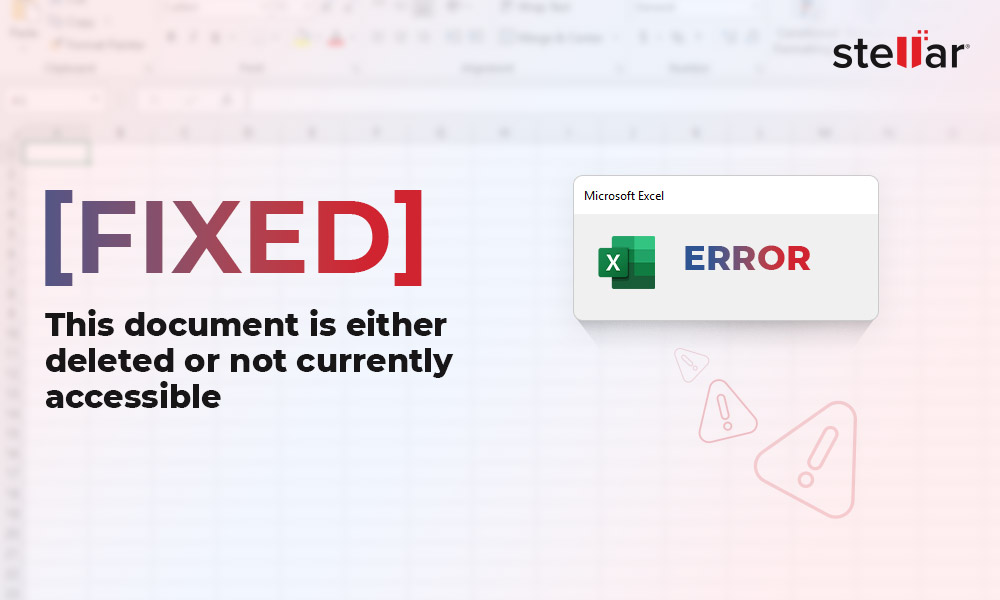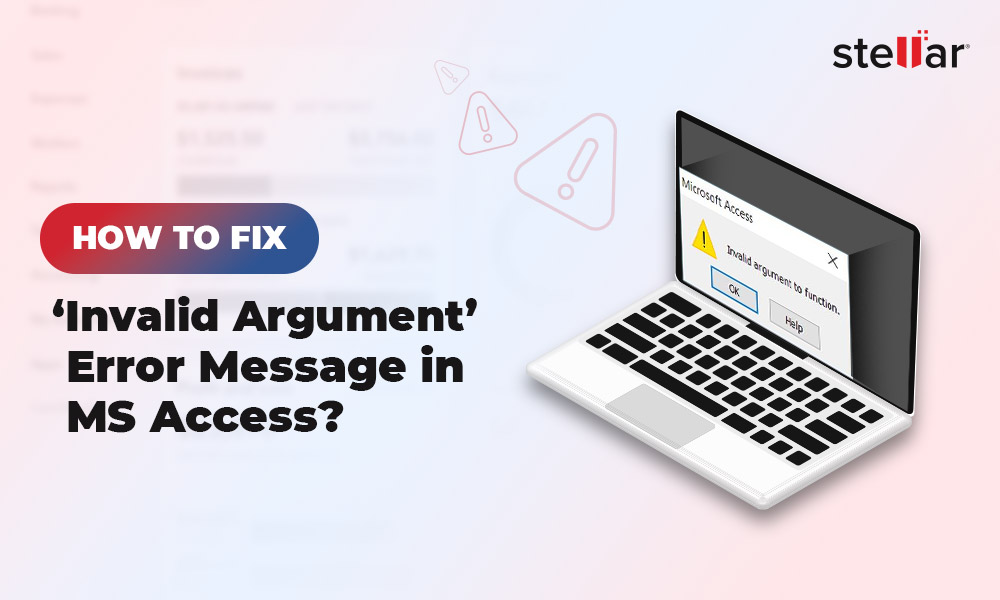When opening an older version of an Excel file in a newer version, you may encounter the "Excel cannot open the file because the extension is not valid" error. This happens if you have accidentally renamed the file with a different file format or an incorrect file extension. Also, you may get the 'Excel cannot open the file' error if the file has become unreadable or corrupted.
This is how the complete Excel error message looks like:
"Excel cannot open the file filename.xlsx because the file format or file extension is not valid. Verify that the file has not been corrupted and that the file extension matches the format of the file."

Check out this video for a quick demonstration of how to fix "Excel Cannot Open the File Because the File Format or File Extension Is Not Valid"
How to Fix the 'Excel Cannot Open the File Because the File Format or Extension Is Not Valid' Error?
Try any of these workarounds to fix the error and regain access to your Excel file data:
Workaround 1 – Change the Default File Format
By default, an Excel file is saved in .xlsx or .xls file format. Trying to open the file with a different or incorrect extension may cause the 'Excel cannot open the file because the extension is not valid' error. To fix the error, try changing the Excel default file format by following these steps:
Note: Take a backup of the Excel file that you cannot open and try the steps on the backup copy.
- In Excel 2010 and newer versions, click on the File menu.
Note: For Excel 2007 and earlier versions, click on the Office button.
- On the left panel, click on Options.
- In 'Excel Options' window, under Save workbooks section, click on the Save files in this file format: drop-down. Select a file format (i.e., the one supported by your Excel version).
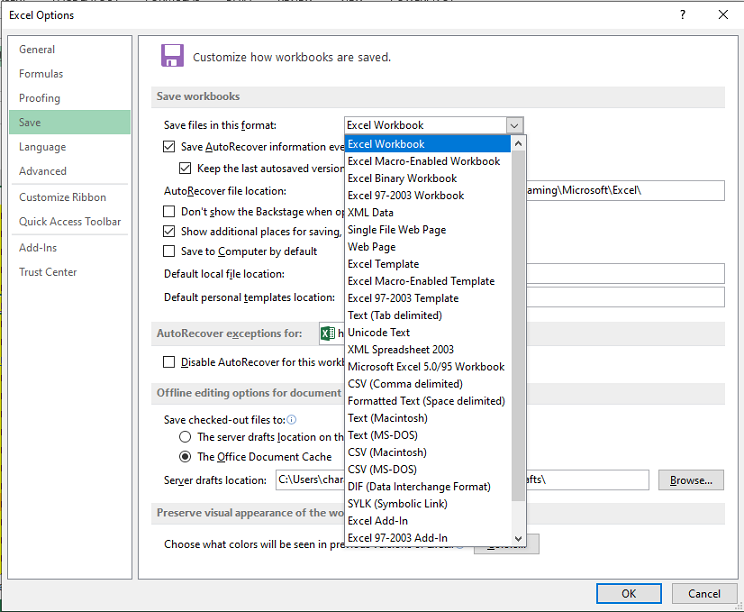
- Click OK.
Check if you can open your Excel file. If not, try the next workaround.
Workaround 2 – Edit the Excel File Permissions
You may receive the 'Excel file format or file extension is not valid' error if you lack sufficient permissions to open the file. Usually this happens when you try to open an Excel file received from some other user. Follow these steps to change the file permissions and see if it fixes the problem:
- Right-click on the file that won't open and click Properties.
- In the file properties dialog box, click the Security tab and then hit the Edit button.
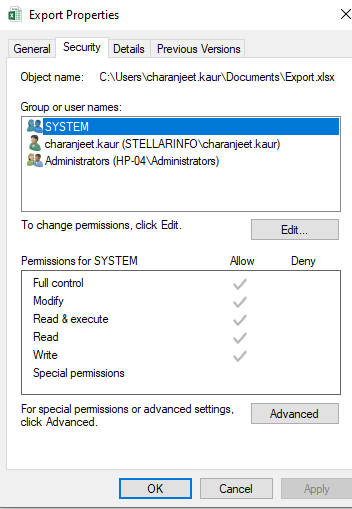
- When the file's permissions dialog box appears, click on the Add button.
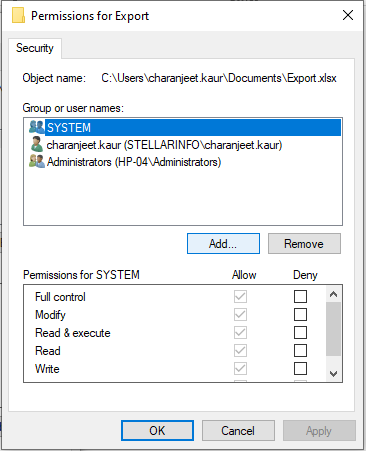
- Click on the Advanced button from the 'Select Users or Groups' window.
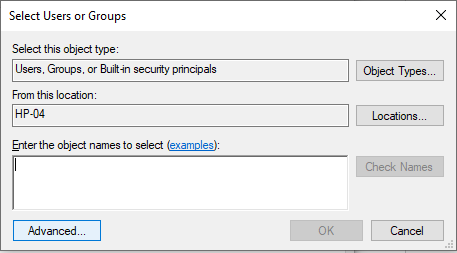
- Select Find Now. A list of all users and groups will get displayed in a search results box. Choose Everyone group from the list and hit OK.
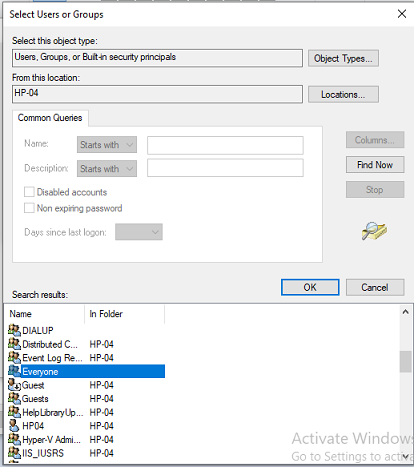
- You can see the 'Everyone' group in the 'Enter the object names to select' textbox. Click OK once again to return to the file's permission dialog box.
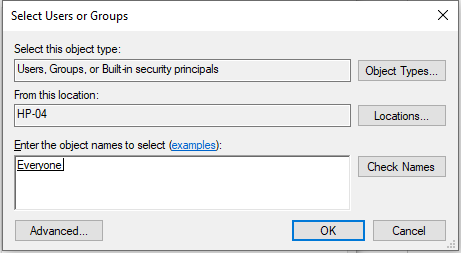
- Click Everyone from the Group or user names: box and check all the checkboxes under Allow.
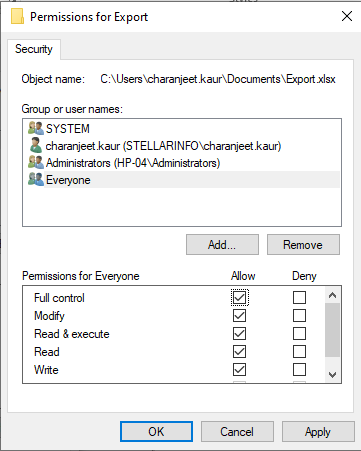
- Click on Apply and then OK.
Now try to open the Excel file. If you're still getting the Excel file cannot open error, use the following workaround.
Workaround 3 – Recover Unsaved Workbook
If the 'Excel file extension not valid error' occurs when attempting to open an unsaved workbook, do the following to recover the unsaved workbook:
- In Excel, click File.
- From the Info screen, under Manage Versions, click Recover Unsaved Workbooks.
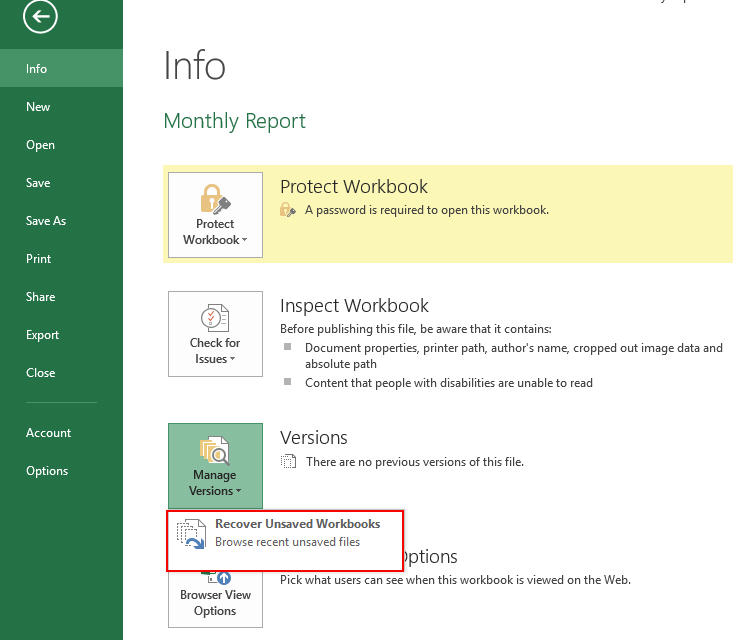
Excel will list any unsaved files. Try opening the file and save it. If this doesn't work, skip to the next workaround.
Workaround 4 – Repair the Workbook
If none of the above workarounds has worked for you, chances are that the Excel file has become corrupted. Try to repair the file using the Excel inbuilt 'Open and Repair' utility by following these steps:
- In your Excel application, click on File > Open.
- In the 'Open' dialog box that pops-up, select the Excel file you want to repair and click the arrow next to the Open button.
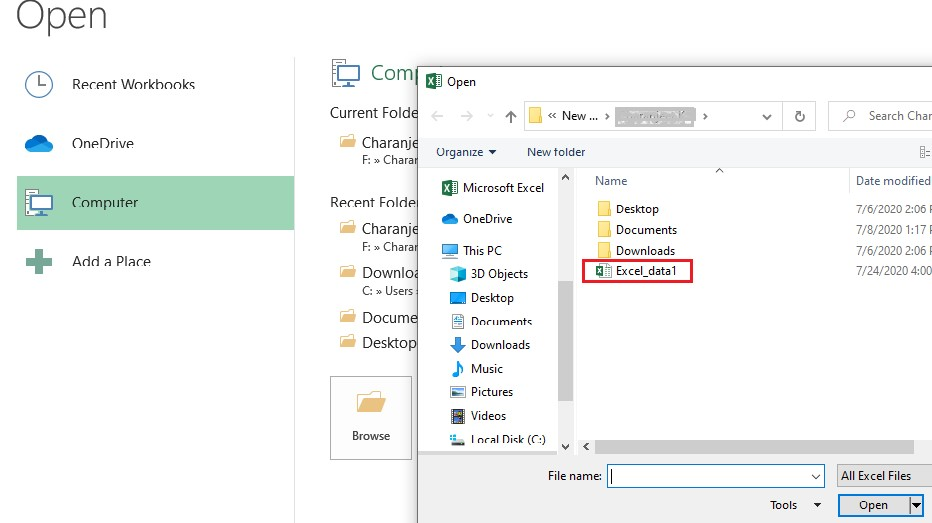
- From the dropdown list, select Open and Repair.
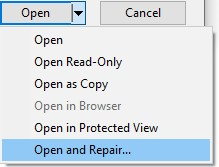
- Excel will ask you to attempt to repair the file or extract data from it. Click Repair to retrieve maximum data. If the Repair option fails, click on Extract Data to recover the data without formulas and values.

If the 'Open and Repair' utility doesn't help fix the corrupted file and/or recover the data, use an Excel repair tool such as Stellar Repair for Excel to regain access to your file and its data.
Stellar Repair for Excel software can help repair severely corrupted XLS and XLSX files. Also, it helps recover all the file components, including tables, pivot tables, cell comments, charts, chart sheets, images, formulas, etc., without impacting the original structure of the Excel file.
To learn how the software works, read this: How to repair corrupt Excel file using Stellar Repair for Excel?
Conclusion
You may encounter the error 'Excel cannot open the file because the extension is not valid' when opening a workbook with a different file format or an incorrect file extension. Also, the error may occur if the Excel file has turned corrupt. This article has covered some of the most effective workarounds to resolve the error. But if nothing works, you can try to repair the Excel file and retrieve its data using the Stellar Repair for Excel software.
iframe














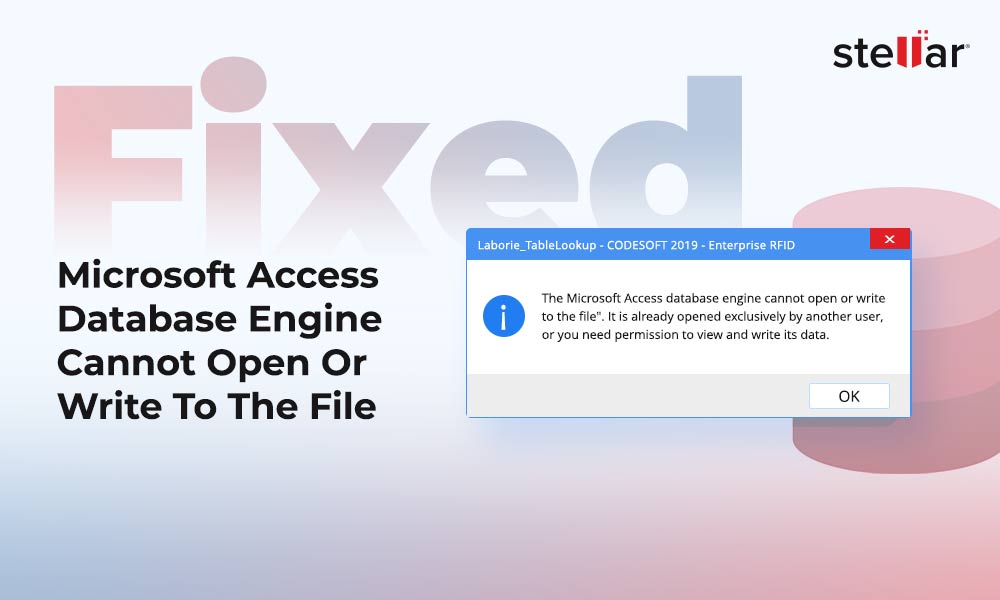
 7 min read
7 min read